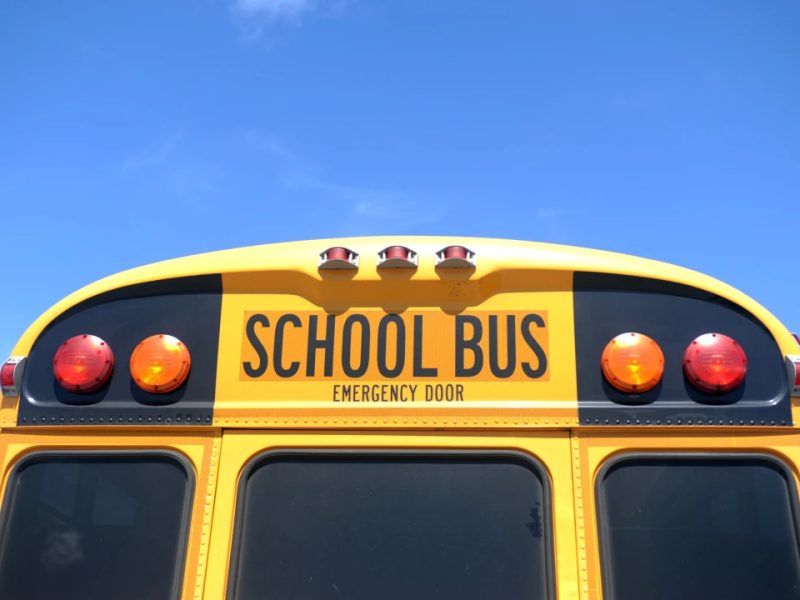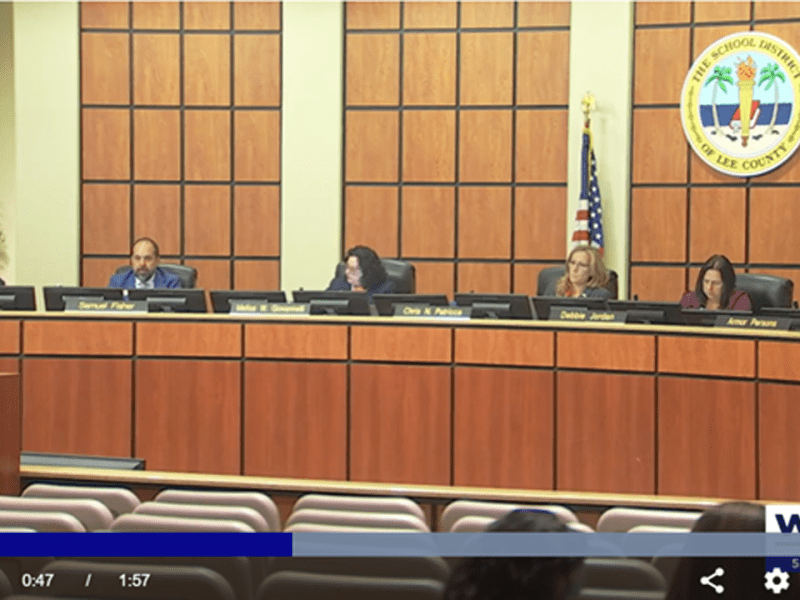Orange school board’s Farrant fails to change transgender bathroom rules
Orlando Sentinel | By Leslie Postal | January 11, 2023
New Orange County School Board member Alicia Farrant, part of the conservative Moms for Liberty group, said that within weeks of her November election, she learned county schools allowed transgender students to use bathrooms that matched their gender identity.
Farrant said she was “appalled” by this Orange County Public Schools practice and on Tuesday she tried unsuccessfully to get it changed. None of the other seven school board members supported her efforts, however, so no change in district policy is planned.
Since 2018, transgender OCPS students have been free to use bathrooms and locker rooms that matched their gender identity. OCPS administrators said that while public school bathrooms can be scenes of bad behavior, they’ve had no reported incidents involving transgender students.
New state rules, adopted in October as part of a package of culture war initiatives pushed by Gov. Ron DeSantis, required districts with such policies to provide students an option for bathrooms and locker rooms “separated by biological sex at birth,” and for districts to alert parents about the status of those facilities at their children’s schools.
Parents with children in Orange’s public schools were mailed letters about “designations of bathrooms, locker rooms and dressing rooms” in mid-December. The letters told parents there were some facilities “separated by biological sex at birth” and noted their locations on campus but also alerted them to the district’s overall policy of allowing “students to use the restroom in the gender in which the student identifies.”
Farrant said that information upset her and others.
“Over the break I was inundated with concerned parents writing in, calling me, meeting with me personally,” Farrant said. “Right now the community is really up in arms about this.”
Tuesday, Farrant urged her colleagues to change the rules so that all multi-stall bathrooms were separated by biological sex and transgender students could only use single-stall bathrooms open to any student.
Seven people spoke to the board about the issue, all but one of them urging the board to keep its current policy, which they said made campuses safer for all students.
Board member Karen Castor Dentel said she supported “our policy of inclusion and fairness and recognizing the humanity of all of our students.”
Board member Melissa Byrd noted the district has not had problems with transgender students in its bathrooms. “This has been our practice for four years,” she said.
In an email, Superintendent Maria Vazquez shared with board members data on “sexual” incidents in OCPS bathrooms. There were nearly 70 last school year but none involved transgender students, she wrote.
“I know this is a hot topic, and it’s a cultural issue,” said board member Angie Gallo.
“We want every child to feel safe,” she said, and the district’s policies aim to do that. “I’m good with the decision.”
The new state rules, which took effect in November, also forced changes to OCPS locker rooms.
At most schools, transgender students can no longer use locker rooms that match their gender identity because most schools only have one set of locker rooms. The state rule requires that “all students have an opportunity to use a bathroom or locker room separated by biological sex at birth.”
As a practical matter, that means the boys and girls’ locker rooms must be separated by biological sex at birth and transgender students must be given another place to change, wrote OCPS attorney John Palmerini, in a December memo to Vazquez.
Palmerini urged schools to meet with “our transgender students and their parents on a case-by-case basis to work out alternative accommodations,” which might be a single-stall bathroom or a coach’s office.
Because schools have many bathrooms, some bathrooms can be open to anyone even as schools designate some as separated by biological sex at birth. Each school, based on its population, campus layout and number of bathrooms, can decide which bathrooms are designated that way and which are open to anyone.
At Edgewater High School, for example, all group bathrooms are separated by biological sex while single-stall bathrooms in four locations are open to any student, according to the letter sent to parents.
At the meeting, Farrant said some parents remain worried.
“I’ve had several tell me their daughter has gone into the bathroom at their school. Walked in and they see a male student who is dressed as a female — so a trans whatever — and so when they see the male student it makes them feel uncomfortable, and they turn around and then they hold their pee the rest of the day,” Farrant said.
She also said she worried that boys would claim to be transgender to sneak into girls’ bathrooms.
Vazquez said district data and her conversations with principals did not document such problems.
“Sadly, there is a lot of misinformation surrounding transgender students,” Vazquez said.
Several speakers told the board transgender students were the ones likely to face harassment and assault if required to use a bathroom that matched their biological sex at birth.
Will Larkins, a senior at Winter Park High School who identifies as non-binary, said a bathroom open to students not comfortable with traditional boys or girls bathrooms is important. “I walk all the way across campus to use this bathroom” because of harassment encountered using the boy’s bathroom,” Larkins said.
But the teenager also said bathroom issues shouldn’t be taking up the school board’s time. “There are problems much, much bigger than one gender-neutral bathroom.”
The district’s 2018 rule was based in part on a court decision involving a transgender student who sued the St. Johns County School Board when it refused to allow him to use bathrooms that matched his gender identity. The court sided with the student, saying the north Florida school district was wrong to prevent the transgender student from using the boys’ bathrooms.
But in late December, an appeals court rejected the lower court ruling and sided with the St. Johns school district.
On Facebook, Farrant wrote that this ”debunked the entire basis of the argument for OCPS.”
A spokesperson for OCPS said this week the district had not changed its stance in light of the appeals court ruling.






